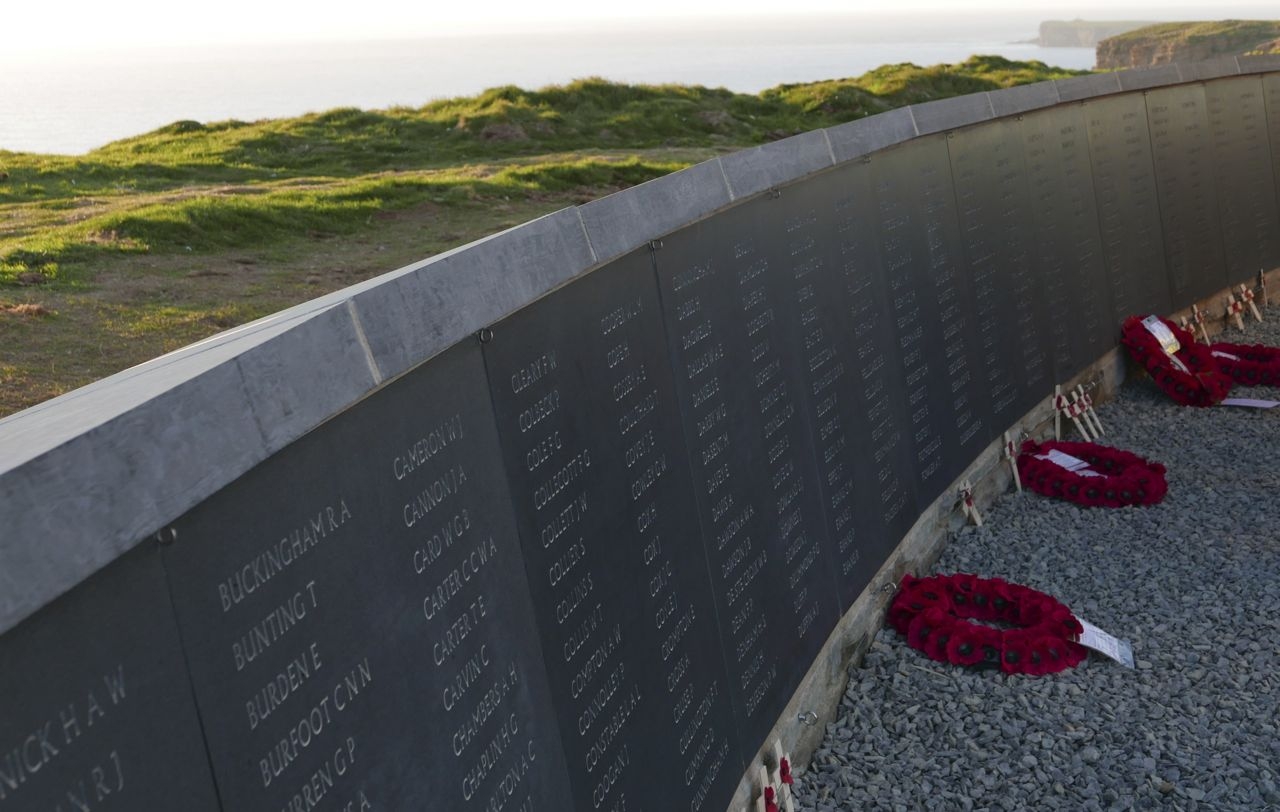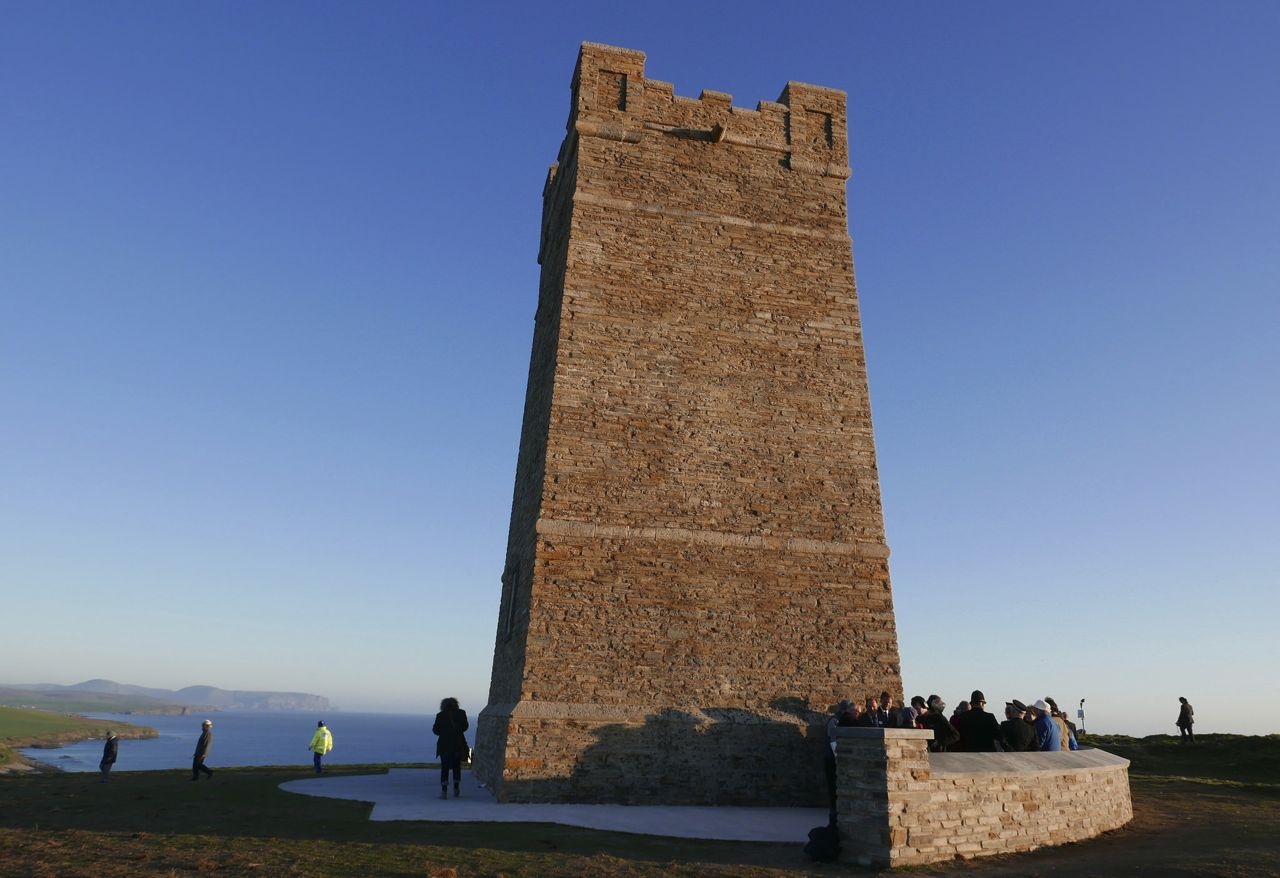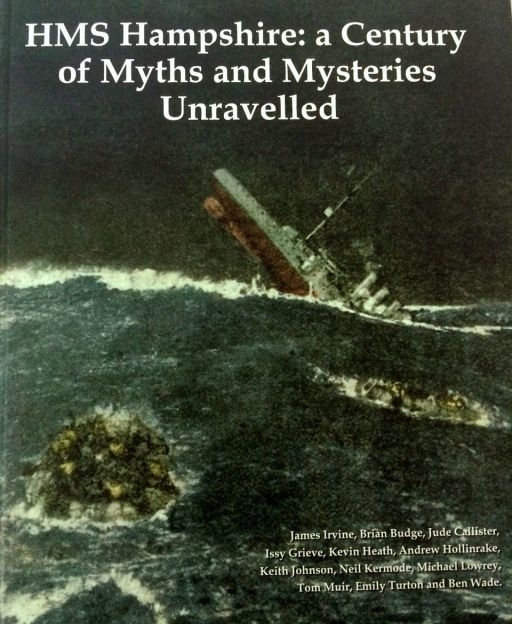This is a meticulous, but nonetheless enthralling, new account of a naval disaster that shook Britain at the height of the First World War.
Twelve authors with local knowledge take us through the events and conspiracy theories surrounding the stormy June night in 1916 when Lord Kitchener and more than 730 men perished in the sinking of HMS Hampshire off a remote headland in Orkney.
The Royal Navy cruiser, newly returned from the Battle of Jutland, struck a mine laid by a German U-boat as it took the War Minister on a mission to Russia.
That much at least is certain.
But controversy and speculation have swirled around the tragedy ever since, fuelled as this book explains, by Field Marshal Kitchener’s heroic reputation and some journalists who were determined not to let the facts get in the way of a story.
Shock
The news of his sudden loss is compared to the worldwide shock which in more recent times followed the deaths of President Kennedy and Diana, Princess of Wales.
There were suggestions of assassination, accompanied by ‘sightings’ of Kitchener across the world – and even a bizarre claim that he’d reached Russia, assumed command of the Bolsheviks and changed his named to Joseph Stalin.
100 years on, there’s still a hint of Kitchener’s formidable presence in constant reworkings of the ‘Your Country Needs You’ recruiting poster. After a career soldiering in the Empire, he was drafted into the Government in August 1914 to mastermind Britain’s war effort.
He became the most senior military figure to lose his life in the First World War.
Kitchener’s name has also tended to overshadow those of the other 736 men who went to their deaths with him on HMS Hampshire. Only 12 survived.
 For the Centenary, the Orkney Heritage Society, publishers of this book, dedicated a new commemorative wall at the 1920s Kitchener Memorial on Marwick Head, ‘to better remember’ all those lost. The wall also honours nine men killed in the same seas later in June 1916 when the minesweeping vessel, Laurel Crown, hit a mine (Photo: Centenary News)
For the Centenary, the Orkney Heritage Society, publishers of this book, dedicated a new commemorative wall at the 1920s Kitchener Memorial on Marwick Head, ‘to better remember’ all those lost. The wall also honours nine men killed in the same seas later in June 1916 when the minesweeping vessel, Laurel Crown, hit a mine (Photo: Centenary News)
The editorial team behind this latest research into the Hampshire disaster offer an exhaustive analysis (right down to the 1916 tide tables), drawing on their knowledge of Orkney and its people, declassified but ‘little-used’ British and German naval files, and the many contemporary accounts left by rescuers, survivors and other eyewitnesses.
Many of the previous interpretations have been misleading, the authors argue. ‘Now that all of the surviving files are available to researchers, these internal records make clear that the Admiralty had nothing to hide, even if the authorities’ rescue efforts were poorly coordinated and their natural reticence led to sustained suspicion.’
Warnings
Some of the most intriguing passages focus on suggestions, still circulating today, that local people were ordered not to assist with the rescue efforts, even to the extent that they risked being shot if they approached the cliffs.
Contributor Issy Grieve, an Orcadian who’s spent her life within sight of the Kitchener Memorial at Marwick Head, Birsay, writes: “Parishioners in Birsay can and still do, even in 2016, recount the tales of what did and did not happen, and what should and should not have been done.”
Yet the book finds clear evidence that civilians were encouraged at senior level to assist. So why the discrepancy? Editor James Irvine puts forward some possible explanations.
In one instance, troops on the ground, unaware of traditional Orkney practices, could have been alarmed by the sight of farmers roping a man down the sheer cliffs (a technique used to gather nesting seabirds’ eggs when harvests failed). Elsewhere, tempers might have frayed under the stress of recovering scores of bodies.
‘Even the most zealous and competent response would not have prevented the loss of most of the 737 lives from drowning or hypothermia within an hour or so of the sinking,’ the authors conclude.

The Kitchener Memorial, skirted by the HMS Hampshire and Laurel Crown commemorative wall, dedicated on 5 June 2016 (Photo: Centenary News)
Joining the people of Orkney for the Marwick Head Centenary commemorations in the golden sunlight of a long summer evening, the events of a century ago seemed very distant. The visible emotion of those present brought the tragedy back into focus. The new memorial, and this book, are indeed fitting tributes all 746 men who died on HMS Hampshire and the minesweeping drifter Laurel Crown in June 1916.
HMS Hampshire: a Century of Myths and Mysteries Unravelled is published by the Orkney Heritage Society. The proceeds from publication, including the authors’ royalties, will go to the Orkney Heritage Society for the Kitchener Memorial Refurbishment Project.
Read the Centenary News report from the HMS Hampshire Centenary ceremony here.
Posted by: CN Editor
